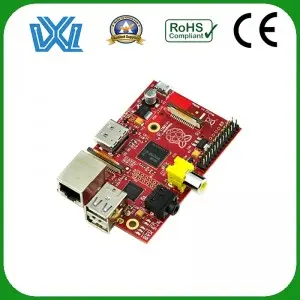Printed circuit boards (PCBs) have become an integral part of modern technology, powering all the electronic devices we rely on every day. While the components and functions of a PCB are well known, there is one critical element that is often overlooked but is critical to its operation: the substrate. In this blog post, we’ll explore what a substrate is in a PCB and why it plays such an important role.
What is the substrate in PCB?
Substrates, commonly referred to as PCB substrates or board materials, are the basis for mounting PCB electronic components. It is a non-conductive layer that provides structural support and acts as an electrical insulation layer between copper layers on a circuit board. The most commonly used substrate material in PCB manufacturing is glass fiber reinforced epoxy laminate, commonly known as FR4.
The meaning of the base material:
1. Mechanical support:
The main function of the substrate is to provide mechanical support for the delicate components mounted on the board. It ensures the stability and durability of the PCB, allowing it to withstand external stress, vibration and temperature changes. Without a robust substrate, the structural integrity of the PCB can be compromised, compromising the performance and longevity of the electronic device.
2. Electrical insulation:
The substrate acts as an electrical insulator between the conductive copper layers on the PCB. They prevent electrical shorts and interference between different components and traces, which could cause malfunction or damage. Additionally, the dielectric properties of the substrate help maintain the integrity and quality of the electrical signals flowing within the board.
3. Heat dissipation:
Electronic components inevitably generate heat during operation. Substrates play a vital role in efficiently dissipating heat away from components to keep them in optimal operating condition. Certain substrate materials, such as metal core PCBs or ceramics, have enhanced thermal conductivity, allowing efficient heat transfer and reducing the risk of overheating.
4. Signal integrity:
The material properties of the substrate significantly affect the signal integrity of the PCB. For example, impedance control ensures consistent flow of high-frequency signals without attenuation. The dielectric constant and loss tangent of the substrate material affect the characteristic impedance and transmission line performance, ultimately determining the overall functionality and reliability of the PCB.
Although the substrate may not always be the most visible, it plays a vital role in the performance, durability and reliability of the printed circuit board. The importance of the substrate cannot be overemphasized, from providing mechanical support and electrical isolation to facilitating heat dissipation and maintaining signal integrity. Understanding the importance of selecting the correct substrate material and its properties is crucial for PCB designers, manufacturers and electronics enthusiasts. By understanding the role of substrates, we can ensure the successful development and operation of more advanced and efficient electronic devices in the future.
Post time: Jul-26-2023

